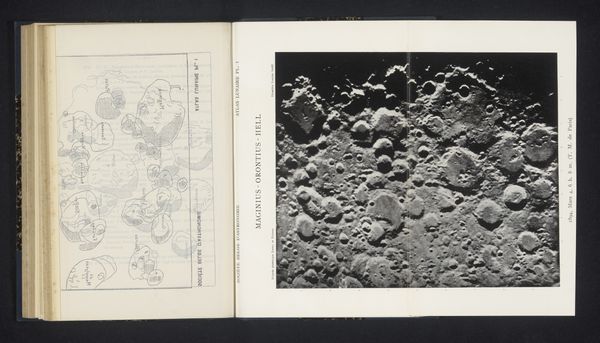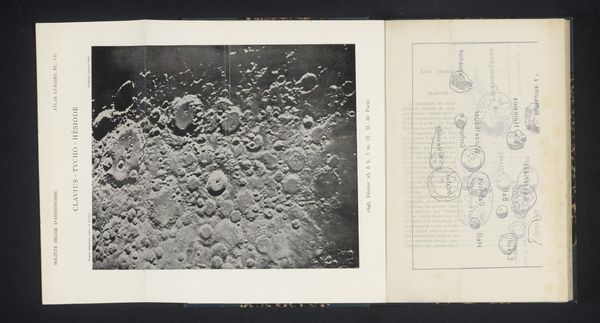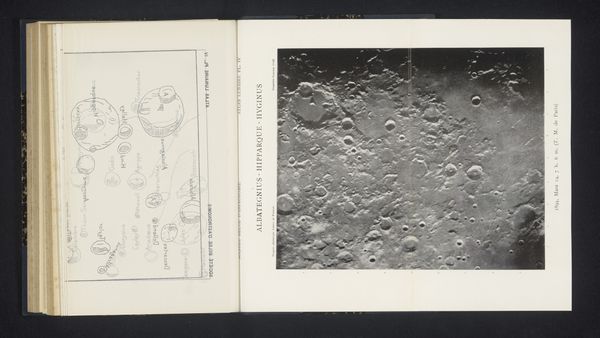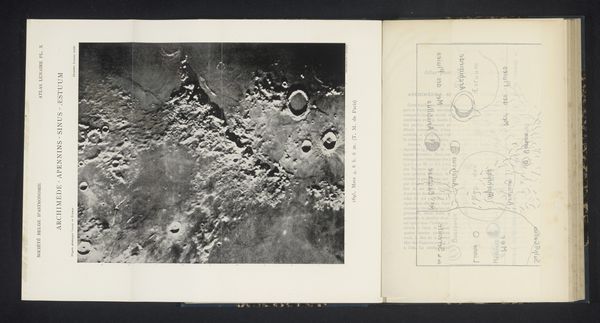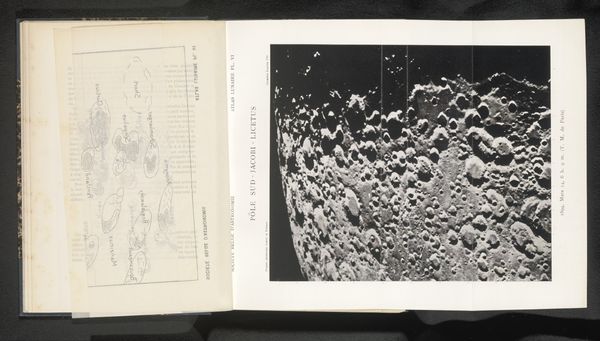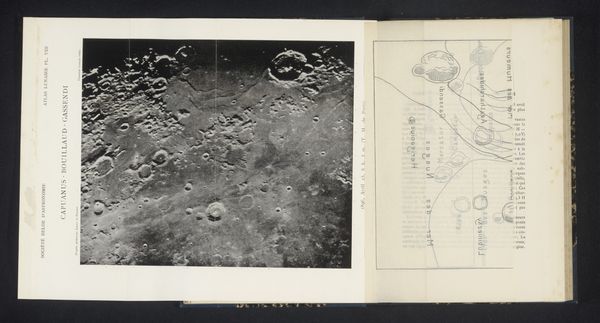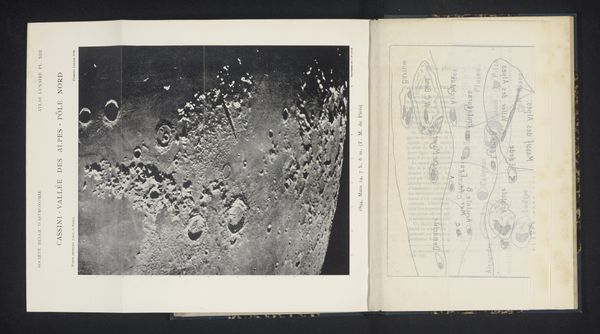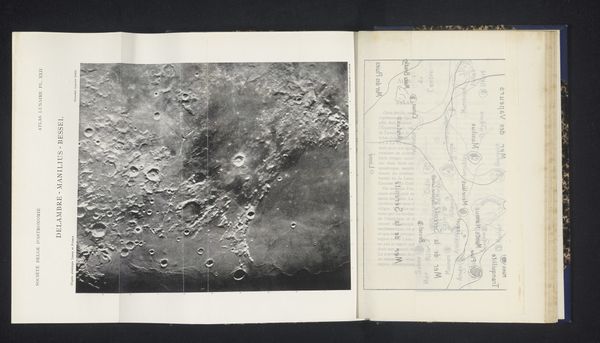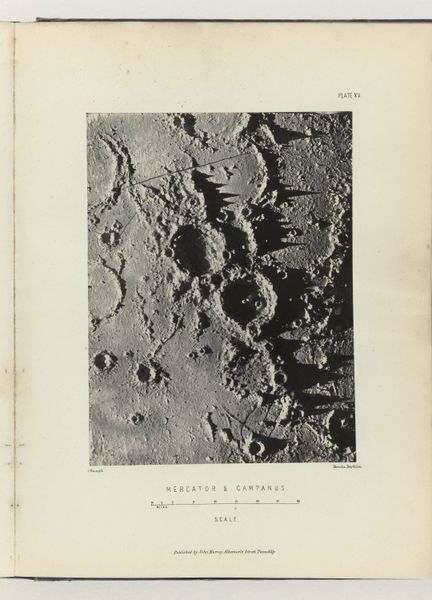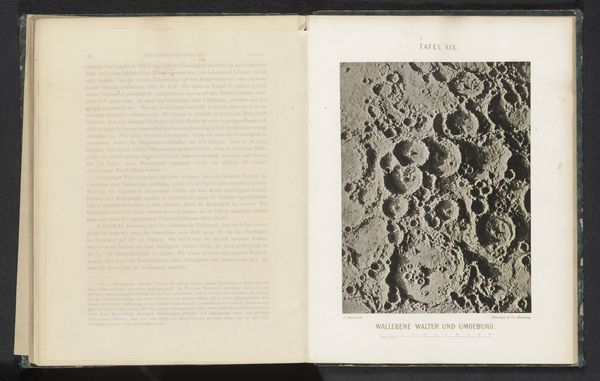
lithograph, print, photography
#
lithograph
# print
#
landscape
#
photography
Dimensions: height 226 mm, width 189 mm
Copyright: Rijks Museum: Open Domain
Curator: I'm immediately drawn into this almost dreamlike world; this grayscale texture just consumes everything, yet there is also something familiar to it. Editor: That’s precisely what's so fascinating. This lithograph from before 1899 titled "Kraters op de maan," or "Craters on the Moon" in English, attempts to capture a landscape beyond our immediate experience using, ironically, very earthly materials. The artists Loewy et Puiseux, working with photography and printmaking techniques, offered the 19th-century public an accessible view of a still mysterious place. Curator: The very name 'crater' speaks to me! It conjures not just celestial geography, but evokes stories, and especially, wounds; like psychic scars writ large on the moon's face. One cannot avoid asking: what events have imprinted such patterns, and what emotional residue lingers within these formations? Editor: The moon has long held cultural significance, weaving itself into mythology, agriculture, navigation and even shaping menstrual cycles. By recording the moon’s features, Loewy and Puiseux placed science within a very social context and the tradition of public engagement with science that had already grown so rapidly over the previous decades. This type of image also fuelled popular ideas around technological progress, suggesting a move beyond earlier associations with the occult. Curator: Right, it’s a very charged space; science vs myth! To me, these photographic renderings do more than simply describe the topography; the gradations of gray within those forms have this strange effect of embodying melancholy. Do you sense that same sort of haunting? Editor: Haunting perhaps, yes. Yet, this moonscape becomes a very tangible artifact and public resource, accessible through printed reproduction to people who would otherwise be separated from that image, and all while still conveying wonder. This photograph bridges the distance. Curator: And creates a space of longing! Seeing the 'out there' makes one consider the ‘in here.’ These craters are also very inward looking—which echoes many contemplations about self and society during that era. It almost encourages a parallel introspection of the terrestrial and the celestial. Editor: An excellent point. This lithograph encourages thinking on those big themes—shifting understandings of human possibilities within a very rapidly changing society and environment. The power of art to reflect humanity, whether turned inward or outward, persists even as technology evolves.
Comments
No comments
Be the first to comment and join the conversation on the ultimate creative platform.

